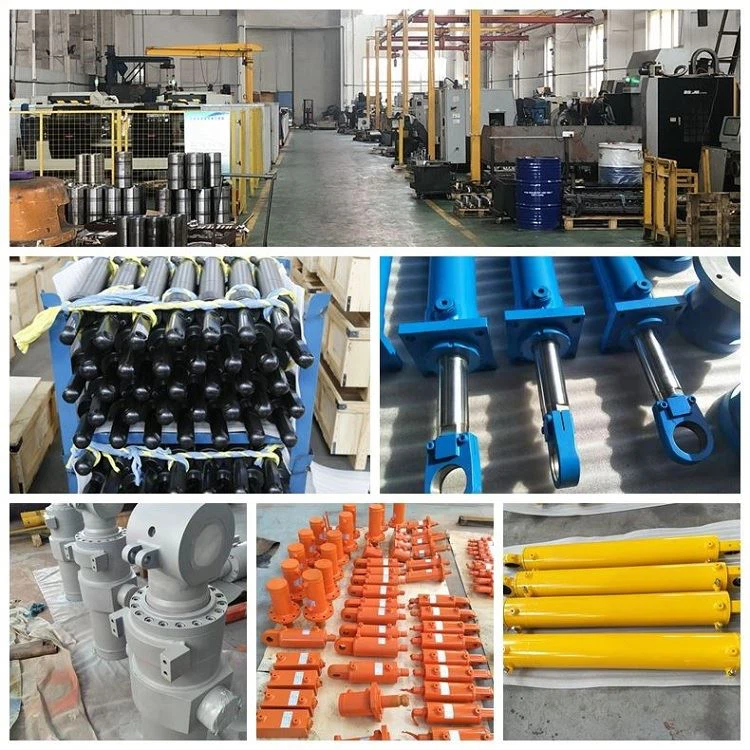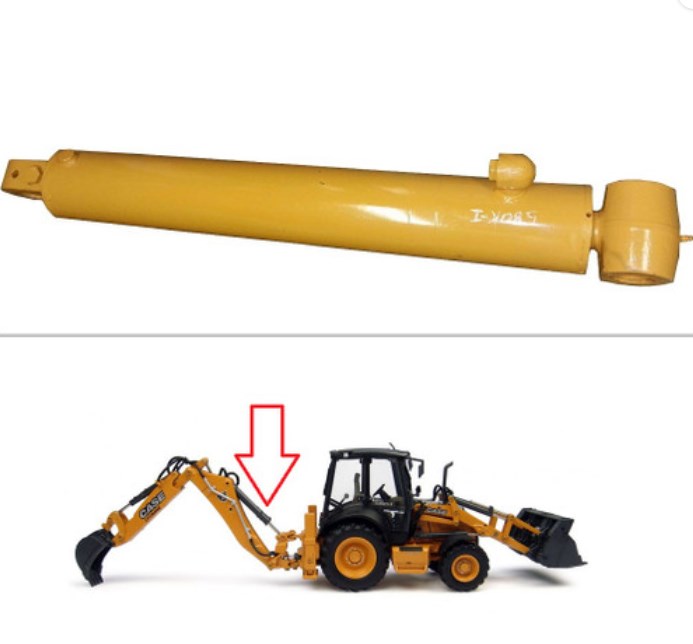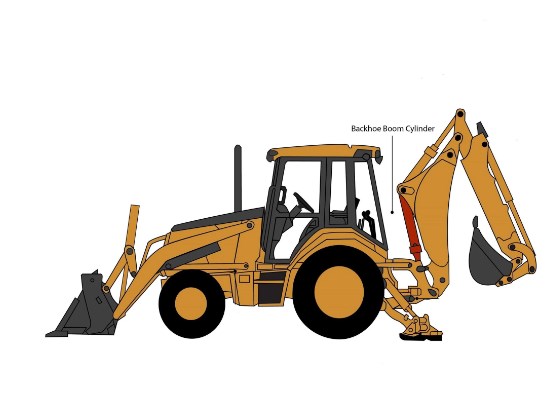Product Description
| Part number | Tube dia mm | Rod dia mm | Stroke mm |
| 205-63-57100 | 120 | 85 | 1285 |
| 206-63-57100 | 120 | 85 | 1285 |
| 205-63-57160 | 120 | 85 | 1285 |
| 205-63-57120 | 135 | 95 | 1490 |
| 203-63-57130 | 125 | 85 | 1120 |
| 203-63-57131 | 125 | 85 | 1120 |
| 205-63-57130 | 125 | 85 | 1120 |
Specifications
1.Supply to USA,Europe,and Australia, Russia.
2.Material:Stainless Steel
3.Professional performance excavator parts supplier
4. High quality and low price
FAQ
Q1: Are you Manufacture or Trade Company?
A1: We are manufacture,we have 20 years experience for supply Metal material and products in domestic.
Q2: How can we guarantee quality?
A2: Always a pre-production sample before mass production;Always final Inspection before shipment;
Q3: What is your terms of payment ?
A3: 1.T/T: 30% deposit in advance, the balance 70% paid before shipment
2.30% down payment, the balance 70% paid against L/C at sight
3.CHINAMFG negotiation
Q4: Can you provide Certificates for aluminum materials ?
A4:Yes,we can supply MTC-Material Test Certificate.
Q5: Can you provide sample?
A5: Yes, we can provide you sample, but you need to pay for the sample and freight firstly. We will return the sample fee after
you make an order.
/* January 22, 2571 19:08:37 */!function(){function s(e,r){var a,o={};try{e&&e.split(“,”).forEach(function(e,t){e&&(a=e.match(/(.*?):(.*)$/))&&1
| Certification: | GS, RoHS, CE, ISO9001 |
|---|---|
| Pressure: | Medium Pressure |
| Work Temperature: | Normal Temperature |
| Acting Way: | Double Acting |
| Working Method: | Piston Cylinder |
| Adjusted Form: | Switching Type |
| Customization: |
Available
|
|
|---|

How does a boom cylinder handle variations in load capacity and weight?
A boom cylinder is designed to handle variations in load capacity and weight in heavy machinery. Here’s a detailed explanation:
When a machinery equipped with a boom cylinder is used for different tasks, the load capacity and weight requirements may vary. The boom cylinder is designed to accommodate these variations and ensure optimal performance. Here are the key factors that contribute to how a boom cylinder handles load capacity and weight variations:
- Force Generation: The boom cylinder generates the necessary force to move the boom, arm, or attachment of the machinery. The force generated by the cylinder can be adjusted based on the load capacity and weight requirements. By controlling the hydraulic pressure and flow rate, the operator can regulate the force exerted by the cylinder, allowing it to handle both lighter and heavier loads.
- Adjustable Stroke Length: Boom cylinders often have an adjustable stroke length, which is the distance the piston can travel within the cylinder. By adjusting the stroke length, the cylinder can adapt to different load capacities and weight distributions. For heavier loads, a longer stroke may be required to provide the necessary extension or retraction of the boom. Conversely, for lighter loads, a shorter stroke may be sufficient, optimizing the cylinder’s efficiency.
- Pressure Compensation: Some boom cylinders are equipped with pressure compensation mechanisms. These mechanisms automatically adjust the hydraulic pressure within the cylinder to compensate for variations in load capacity and weight. For example, as the load on the boom increases, the pressure compensation mechanism increases the hydraulic pressure, ensuring consistent force and control throughout the operation.
- Integration with Load Sensing Systems: Boom cylinders can be integrated with load sensing systems that provide real-time feedback on the load capacity and weight. Load sensing systems use sensors to measure the force exerted on the boom or attachment and transmit this information to the hydraulic control system. The hydraulic control system can then adjust the pressure and flow rate to match the load requirements, optimizing the cylinder’s performance.
- Multi-Stage Cylinders: In some cases, machinery may be equipped with multi-stage boom cylinders. These cylinders have multiple sections or stages that can be extended or retracted independently. Each stage may have different dimensions and force capabilities. By adjusting the extension or retraction of each stage, the cylinder can adapt to varying load capacities and weight distributions, providing precise control and handling.
By incorporating these design features and mechanisms, a boom cylinder can effectively handle variations in load capacity and weight. This allows the machinery to perform a wide range of tasks with different load requirements, providing versatility and efficiency in industries such as construction, mining, material handling, and more.

How does a boom cylinder handle variations in cylinder size and capacity?
A boom cylinder is designed to handle variations in cylinder size and capacity. Here’s a detailed explanation:
Boom cylinders are hydraulic actuators used in various applications, such as construction equipment, material handling machinery, or forestry equipment. They are responsible for providing the necessary force and controlled movement to extend, retract, and articulate the boom or arm.
When it comes to handling variations in cylinder size and capacity, boom cylinders are designed and manufactured to match the specific requirements of the equipment and the intended application. Here’s how they handle these variations:
- Size Customization: Boom cylinders can be customized in terms of size to fit different equipment configurations. The size of the cylinder, including its length and diameter, can be adjusted to ensure proper installation and compatibility with the boom or arm it is attached to. The size customization allows for optimized performance and efficient operation of the equipment.
- Capacity Selection: Boom cylinders are available in different capacity options to handle varying loads and operating conditions. The capacity of the cylinder refers to its ability to generate the required force to move the boom or arm. Higher capacity cylinders are used for heavy-duty applications, while lower capacity cylinders are suitable for lighter loads. The appropriate capacity selection ensures that the boom cylinder can handle the specific load requirements of the equipment.
- Pressure and Flow Control: Boom cylinders utilize hydraulic systems to generate the required force. The hydraulic pressure and flow rate can be adjusted or controlled to match the cylinder size and capacity. By regulating the pressure and flow, the boom cylinder can effectively handle variations in size and capacity while maintaining the desired performance and control.
- Sealing and Internal Components: Boom cylinders are equipped with sealing systems and internal components that are designed to withstand the forces and pressures involved. These components are carefully selected to ensure compatibility with the cylinder size and capacity. Proper sealing and internal components help to maintain the cylinder’s efficiency and prevent leaks or failures, regardless of the size or capacity of the cylinder.
Overall, boom cylinders are engineered to handle variations in cylinder size and capacity by offering customization options, capacity selection, pressure and flow control, and appropriate sealing and internal components. These features ensure that the boom cylinders can effectively and reliably perform their intended functions across different equipment configurations and operating conditions.
It’s important to consult the equipment manufacturer’s guidelines and recommendations when selecting and installing boom cylinders to ensure compatibility and optimal performance.

What is the importance of regular maintenance for boom cylinders?
Regular maintenance for boom cylinders is of utmost importance to ensure their optimal performance, longevity, and safe operation. Here’s a detailed explanation of the importance of regular maintenance:
- Performance and Efficiency: Regular maintenance helps to maintain the performance and efficiency of boom cylinders. Over time, wear and tear, contamination, and fluid degradation can affect the cylinder’s components, such as seals, rods, and piston surfaces. By conducting routine inspections, cleaning, and lubrication, potential issues can be identified and addressed promptly, ensuring smooth operation, minimizing energy loss, and maximizing the cylinder’s performance.
- Prevention of Malfunctions: Regular maintenance plays a crucial role in preventing unexpected malfunctions or failures of boom cylinders. By inspecting and maintaining the cylinder, operators and maintenance personnel can identify and address potential issues, such as leaks, damaged seals, or misalignment, before they escalate into more significant problems. Timely maintenance helps prevent costly downtime, equipment damage, and potential safety hazards.
- Extended Lifespan: Proper maintenance significantly extends the lifespan of boom cylinders. Regular cleaning, lubrication, and inspection help to minimize wear and corrosion on critical components. By addressing issues promptly and performing necessary repairs or replacements, the overall lifespan of the cylinder can be prolonged, reducing the need for premature replacements and associated costs.
- Safety: Regular maintenance is essential for ensuring the safety of operators and those working around the equipment. Boom cylinders operate under high pressures and handle heavy loads, making their proper functioning crucial for safe operation. By conducting regular maintenance, potential safety hazards can be identified, such as damaged components, leakages, or compromised structural integrity. This allows for timely repairs or replacements, ensuring the safe operation of the boom cylinder and minimizing the risk of accidents or equipment failures.
- Manufacturer’s Recommendations: Following the manufacturer’s recommended maintenance schedule is vital for boom cylinders. Manufacturers provide specific guidelines on inspection intervals, lubrication requirements, and other maintenance tasks based on the cylinder’s design and usage. Adhering to these recommendations helps maintain warranty coverage, ensures compliance with safety standards, and preserves the cylinder’s optimal performance as intended by the manufacturer.
In conclusion, regular maintenance for boom cylinders is crucial for maintaining performance, preventing malfunctions, extending lifespan, ensuring safety, and adhering to manufacturer’s recommendations. By investing in routine maintenance and addressing any identified issues promptly, operators can maximize the efficiency, reliability, and longevity of boom cylinders, ultimately contributing to the overall productivity and safety of heavy machinery operations.


editor by Dream 2024-04-23